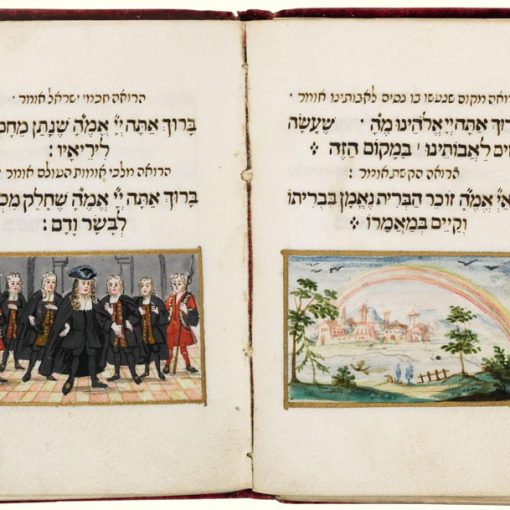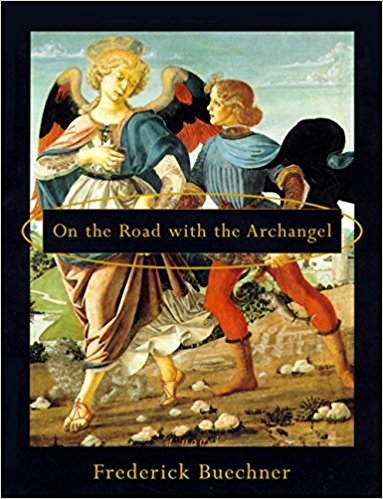I am trying to finally knock out this article and as is often the case the introduction is proving the greatest challenge. In particularly I am trying to set up an argument (albeit briefly, it is not the main purpose of this article) for considering the Targumim of the Megillot as a unity. If you have the time to read it, let me know what you think.
A tech note. I am using Nisus Writer Pro , excellent word processing app for the Mac as I have said before, and just found one nice feature is that when you copy and paste like this (I am editing in WordPress via the web) it keeps your footnotes! Nice. I am going to go ahead and format them so that they are clickable, but even without doing that it is a great and thoughtful touch.
The Use of “Eschatological Lists” within the Targumim to the Megillot
Abstract: Several of the Targumim to the Megillot contain lists (songs, famines, kings, etc.) that culminate in the future or messianic era. For example, TgSS opens with the list of Ten Songs and TgRuth opens with the list of Ten Famines. Such lists are well known from other midrashic texts and this article will consider how and why these lists are used with the Targumim to the Megillot and will propose that these additions are not merely the result of an opportunity presented by the Hebrew text but are being used specifically to further the overarching exegetical agenda of the Targum in question.
Introduction
This study is part of a larger project to examine the Targumim of the Megillot as a collective unit. This very premise, that one ought to consider these texts as a unit, takes a certain amount of justification and indeed, may not, in the end, be justifiable at all. (That is what this investigation is all about, after all.) A thorough defense of this premise is beyond the scope of this article, however, it is appropriate to offer a summary as to why one ought to consider these five Targumim as a unit; there are two characteristics about these texts that I believe justify considering them together. The first is that they were likely considered a liturgical unit by the time their Targumim are being composed. The second is that each text was read in its entirety during the service which would allow the Targumist the opportunity to create a sustained interpretation of the book as a whole.
The Megillot
We must begin with an admission that clear evidence of the collection and ordering of the Megillot together in the Hebrew Bible is relatively late. The Babylonian Talmud [mfn]b BB 14b. See also Sof. 14:3 (40b): “In the case of Ruth, the Song of Songs, Ecclesiastes, Lamentations and Esther, it is necessary to say the benediction, ‘Concerning the reading of the Megillah,’ although it is included in the Hagiographa,” trans. A. Cohen, The Minor Tractates of the Talmud, (London: Soncino, 1965), p. 276. [/mfn] does not list the Five Scrolls as a unit, but the Leningrad Codex (1008 ce) does, albeit ordered following the presumptive chronology of the books’ composition. The Rabbinic Bible (1525 ce) groups the Five Scrolls together and orders them according to the cycle of festivals as it occurs throughout the liturgical year, the order found in modern editions: Song of Songs, Ruth, Lamentations, Qohelet, and Esther. Exactly when these scrolls began to be used liturgically is unclear and we can be fairly confident that there was no uniformity in their liturgical development. The practice of reading Lamentations on Tisha b’Ab certainly was incorporated relatively early, perhaps even pre-70 ce, [mfn]See Brady, “The Date, Provenance, and Sitz im Leben of Targum Lamentations,” JAB 1 (1999), pp. 5-11, “Vindicating God,” JAB 3.1/2 (2001), pp. 27-40, and The Rabbinic Targum of Lamentations: Vindicating God, (Leiden: Brill, 2002), pp. 4-8.[/mfn] and the reading of Esther and its Targum is well attested in M Meg. The evidence for when the other scrolls were incorporated into the lectionary is not well attested nor was it universally practiced. [mfn]See Charles Perrot, “The Reading of the Bible in the Ancient Synagogue,” Mikra, (Philadelphia: Fortress Press, 1988), pp. 146-47. For a discussion of the Yemenite liturgical practices see Albert Van der Heide, The Yemenite Tradition of the Targum of Lamentations, (Leiden: E. J. Brill, 1981), pp. 15-21. [/mfn] The reference in Soferim 40b is, however, reasonable evidence that reading the Scrolls with their related festival was already the prescribed practice by the seventh century. [mfn]See also Sof.42b for explicit reference to the translation (Targum) to Lamentations.[/mfn] Elbogen also offers a very practical reason for assuming the reading of the Megillot in services. “The existence of rather ancient midrashim on [the scrolls] testifies to the relatively early introduction of the scrolls.” [mfn]Ismar Elbogen, Jewish Liturgy: A Comprehensive History, trans. Raymond P. Scheindlin, (Philadelphia: Jewish Publication Society, 1993), p. 150.[/mfn] By at least the Geonic period then it seems reasonably certain that the Five Scrolls were considered a unit and, in all likelihood, being used by many communities as part of their festal worship. [mfn]This is, of course, all highly speculative, but one must speculate or the proposition would never move forward.[/mfn] The fact that most scholars view the Targumim of the Megillot as quite late suggests that these texts developed at roughly the same time as the biblical texts were being incorporated into synagogal worship. [mfn]The textual history and dating of these texts is extremely difficult, but there is a general consensus. TgSS most likely dates to the seventh or eighth centuries ce (Philip S. Alexander, The Targum of Canticles. The Aramaic Bible Vol. 17a, [Collegeville, MN: 2003], p. 55). Levine suggests that there are early, perhaps even pre-Mishnaic, halakhic traditions in TgRuth, but dates the final form to the seventh or eight centuries ce (Étan Levine, The Aramaic Version of Ruth, [Rome: Biblical Institute Press, 1973], p. 13). Similarly although TgLam contains early interpretive traditions the final form of TgLam is certainly no earlier than the sixth century ce and most likely dates the eighth century (Brady, “Date,” passim). The date of TgQoh is most likely seventh century ce (Peter S. Knobel, The Targum of Qohelet: The Aramaic Bible, vol. 15, [Edinburgh: T&T Clark, 1991], p. 15.) Esther has two Targumim and dating them is as difficult as any of the other Targumim of the Megillot, but both Targumim to Esther are also to be dated to the seventh century ce (Bernard Grossfeld, The Two Targums of Esther. The Aramaic Bible, vol. 18, [Edinburgh: T&T Clark, 1992], p. 21).[/mfn]
Exegetical Sphere
Once these texts have moved into the liturgy the second primary characteristic that justifies considering them as a collective unit in this study becomes clear. In general, each of these texts, at some point and in most Jewish traditions, were read in toto. Given the precedence set by the reading of Esther in M Meg 4:4, it seems likely that the Targum of the given text would also have been read, either with the Scripture reading as part of the synagogal service, or as part of study during the period of the festal observation. [mfn]Alexander suggests that while TgSS may have been intended for public reading, “Tg. Cant. seems in fact to have functioned more commonly as an aid to private devotion,” ABTC, p. 54. On the Sitz im Leben of the Targumim in general see Alexander, “Jewish Aramaic Translations,” Mikra, pp. 238-41. [/mfn] The fact that each of the Five Scrolls are also relatively short would also suggest that as the Targumic tradition developed and was redacted we might expect to find that the Targum is able to provide a sustained and directed interpretation of the work as a whole unit, rather than the more ad hoc interpretation found in larger Targumic texts or the midrashic collections. This has already been demonstrated with respect to TgLam [mfn]See Brady, Rabbinic Targum, pp. 4-16.[/mfn] and Philip Alexander has demonstrated that this is also true (in a very grand fashion) for TgSS.[mfn]Alexander, ABTC, pp. 13ff. and passim.[/mfn]
There are, in fact, a number of exegetical similarities between the Targumim of the Megillot, as Levine has noted in his introduction to TgRuth. [mfn]Levine, Ruth, p. 3. See below passim.[/mfn] Given the dissimilarity between the five biblical texts, the appearance of these common exegetical techniques within their Targumim strongly implies a relationship between them. Levine lists fourteen such “affinities,” all of which are exegetical in nature and the first in his list is “ten events in history, the tenth being eschatological.” [mfn]Ibid.[/mfn] It is this particularly exegetical maneuver, that of creating lists and specifically “eschatological lists” whose final item is related to the messianic age, that is the subject of this study. These additions are not merely the result of an opportunity presented by the Hebrew text but are used specifically to further the overarching exegetical agenda of the Targum in question.





4 thoughts on “An Introduction – Harder than it looks”
Hello, Chris,
Glad to see you hvae time to write. My 2 cents: I wonder if it would be clearer if you specify at the start what you mean by unity? Obiovusly you are building up the evidence under a number of definitions, but some definition at the start would help. You presumably do not mean authorial unity but editorially. And it seems conceptually in the way they were treated.
I am getting increasingly interested in the Megilloth and so happy to read more!
Have a god summer
Jim
Thanks Jim! I will work on tightening up the definitions. The use of the term “unity” is actually only in my preamble on the blog (the actual intro to the article begins with “The Use of “Eschatological Lists” within the Targumim to the Megillot”). All I mean, as you have surmised, is to treat them as a “unit” in the way that the canon currently does and many modern commentaries do as well. The challenge is that the Megillot were, of course, not always considered a unit and certainly weren’t when they were written. But were they by the time the targumim were finally edited? Perhaps… (And I think it likely.)
I may be calling on you soon about a Megillot related project. Have you done much with LXX to Lam?
But you do use ‘collective unit’, which perhaps implies that they were intentionally collected together (at some point).
Currently working on LXX Ecclesiastes. I have not done much on Lam (Kevin Youngblood at Southern Baptist has worked on it under Peter Gentry), but there is much work yet to be done on it.
Jim
Ah, fair enough. Of course they were intentionally collected at some point. The trick is when and was it before or after the targumim were being given their final edit.
If memory from IOTS serves rightly Jan-Wim Wesselius also thinks there is a possibility that there was a final editorial “buffing” given to all the Tg Meg. Levine and Grossfeld have noted exegetical similarities and, eventually, I hope to tackle that.